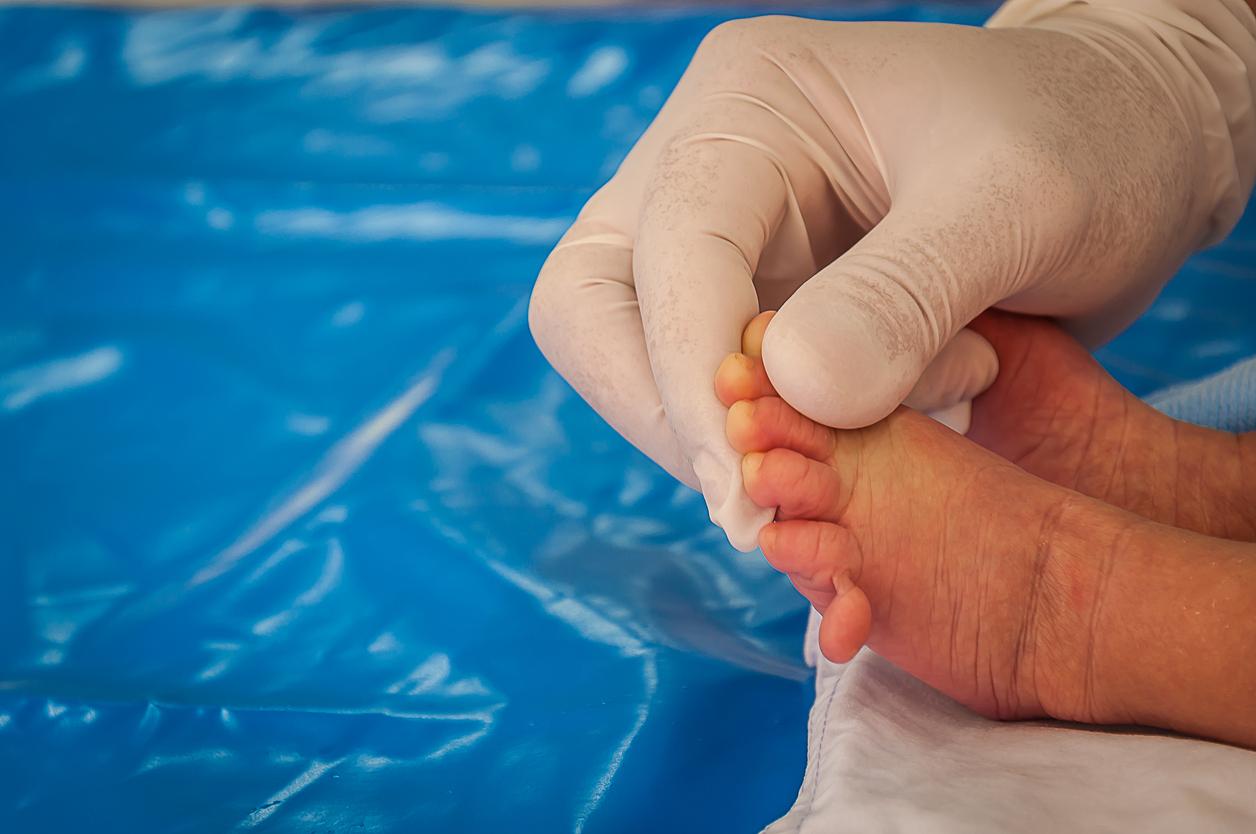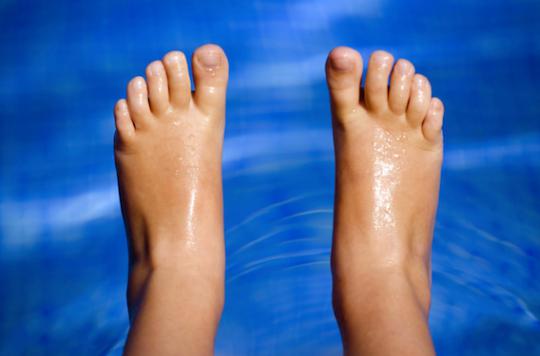Coverage by the podiatrist
A hallux valgus in the right foot at only 35? No wonder women who wear pumps all day long. In one in three cases, there is also a congenital predisposition. But there are other contributing factors: having flat feet, the approach of menopause, which causes sagging tissues and therefore enlargement of the forefoot, as well as excess weight .
But why does the forefoot change to form a lump? Because the abductor tendon of the big toe retracts, deflecting the big toe from its axis. The head of the first metatarsal, the bone at the base of the big toe, then becomes more or less protruding. Subsequently, repeated rubbing against the shoe gives rise to a small ball called “bunion”, in fact corresponding to a benign tumor of the bone. As for the redness and the pain that we find at the level of this ball, they are explained by the inflammation of the small bag of liquid which surrounds it to facilitate the sliding of the tendons on the bone. It is usually at this stage that we consult. The clinical examination and an X-ray of the foot will allow the doctor to appreciate the importance of the deformity.
When the hallux valgus is still flexible
If the deformation is recent and the discomfort rather aesthetic, the pain occurring only in certain situations, no haste. There is a good chance that the hallux valgus is still reducible. Support from the chiropodist may then suffice. In order to correct the axis of the big toe and put it back in its place, he makes a silicone repositioning orthosis, to be placed between the first and the second toe. Depending on the case, it can only be worn at night or during the day. It can also be combined with the wearing of an orthopedic sole intended to better distribute the support. The goal: to relieve the first metatarsal and prevent it from deviating further from its axis.
Finally, the chiropodist can perform rehabilitation exercises for the muscle of the big toe, which will help it find its normal axis. Also be sure to wear wide shoes and, if necessary, apply protections found in pharmacies.
When the question of intervention arises …
If the deformation is very important, preventing you from putting on your shoes normally and causing repeated pain, the question of the intervention arises. Especially if the discomfort also appears when you walk barefoot. In this case, it is probably a fixed strain. Only a surgical procedure will be truly effective. But, more than the extent of the deformity, it is the intensity of the pain that should motivate your decision.
Several surgical techniques can be proposed to you. They all have the same goal: put the big toe back in line and remove the bunion. In 90% of cases, surgeons perform an osteotomy (section) of the first metatarsal. If it gives good results, this technique however requires the installation of material, such as staple or screw. Most often performed under general anesthesia, it requires hospitalization for two or three days. Walking does not become possible again until after a month and a half to two months.
During this time, it is necessary to move around using crutches and provide rehabilitation sessions with the physiotherapist. Allow three months of work stoppage. The surgeon will see you again three and six months after the operation. Finally, note that, if the deformity concerns both feet, it is preferable to wait at least six months between the two operations.
Another method that tends to develop: the technique known as “Mac Bride”. It was until now very little practiced, because it was delicate and its results remained uncertain. But it has recently benefited from significant technical improvements, becoming simpler than the traditional technique.
This operation consists of detaching the retracted tendon to transfer it to the other side of the toe and thus reverse the deformity. It lasts fifteen to twenty minutes under local anesthesia and the discharge from the hospital takes place the same evening. The pressure on the heel can be done immediately and, after ten days, it is possible to walk again normally. Thereafter, no rehabilitation is necessary and the sick leave does not exceed a fortnight.












-1685098342.jpg)





